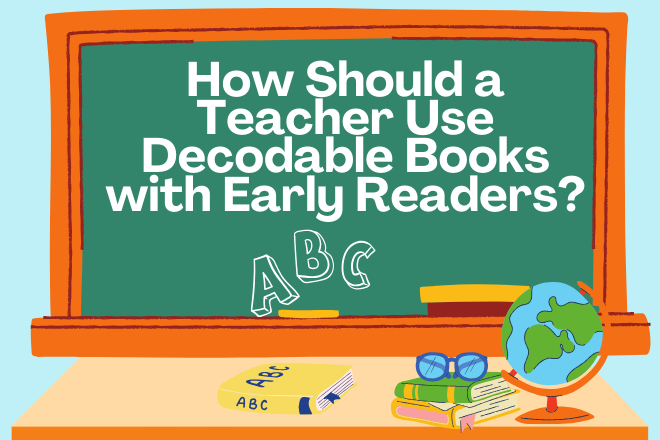How Should a Teacher Use Decodable Books with Early Readers?
How Should a Teacher Use Decodable Books with Early Readers
Using decodable books with early readers can help reinforce phonics skills and support the development of reading proficiency. But what are some ways teachers and educators can incorporate using decodable books with their students?
In this blog, we’ll delve into some of the tips and strategies on how teachers can use decodable books with early readers.
Providing Detailed Instructions
The first step when introducing and using decodable among early readers is to provide them with detailed instructions. This helps educators lay a foundation for success by providing students with detailed instructions about letters and sounds included in the books. Doing this also helps students understand basic phonetic concepts and makes learning with decodable books easier and more effective for early learners.
Systematic Introduction
After providing students with explicit instructions on the basic concepts of decodable books. It’s time to gradually introduce decodable books systematically, making sure they align with the phonics skills being taught in your curriculum. Starting with simple, basic phonetic patterns and progressively moving to more complex ones is a good rule to follow. Introducing new concepts systematically helps students gradually improve their decoding skills without overwhelming them with too many unfamiliar words.
Choral Reading
Engaging students in choral reading, where students read together as a group can be an effective and fun way to use decodables with early learners. It promotes a sense of community and can be a good way to help all students feel involved regardless of their reading levels.
It also allows students to learn from and work with peers who may find pronouncing words easier. Choral reading also creates the opportunity for students who may feel nervous reading to participate more comfortably and contribute to the group effort.
Independent Reading
While guided reading and group reading are great for supporting early readers, encouraging independent reading helps students build on their acquired skills and their confidence.
This allows students to apply their phonics knowledge independently, helping them learn at their own pace, discover new words for themselves, and explore the world of phonics.
Teachers can provide opportunities for independent reading of decodable books in literacy centers or as homework assignments.
Class Reading Activities and Discussions
Beyond simply sounding out words, decodables can be used as a springboard to encourage engagement through class reading activities and discussions. Teachers can create class reading sessions to get students involved in identifying different phonetic patterns and connecting sounds to meaning. This not only reinforces their decoding skills but also provides a fun way for students to learn.
During these class readings, educators can also engage students in comprehension discussions. Asking questions that prompt students to share personal experiences and ideas as they relate to the text, provides an opportunity for them to gain a deeper understanding of the text.
Repeated Readings
Repeat! Repeat! Repeat!
Repetition helps reinforce phonetic patterns and improves fluency among young readers. Encouraging repeated readings of decodable books with students builds their familiarity with sounds and words, helping them build their decoding skills. Educators can encourage repeated reading by having students read the same book multiple times over a week, paying attention to progress, and providing help with areas students may be struggling with.
Assessment
Decodable books can be used as an informal assessment tool to track the progress and individual needs of students. They can be used by educators alongside other assessment tools that are part of the school curriculum to monitor reading speed and accuracy, reading fluency, and to pinpoint any specific areas of difficulty.

